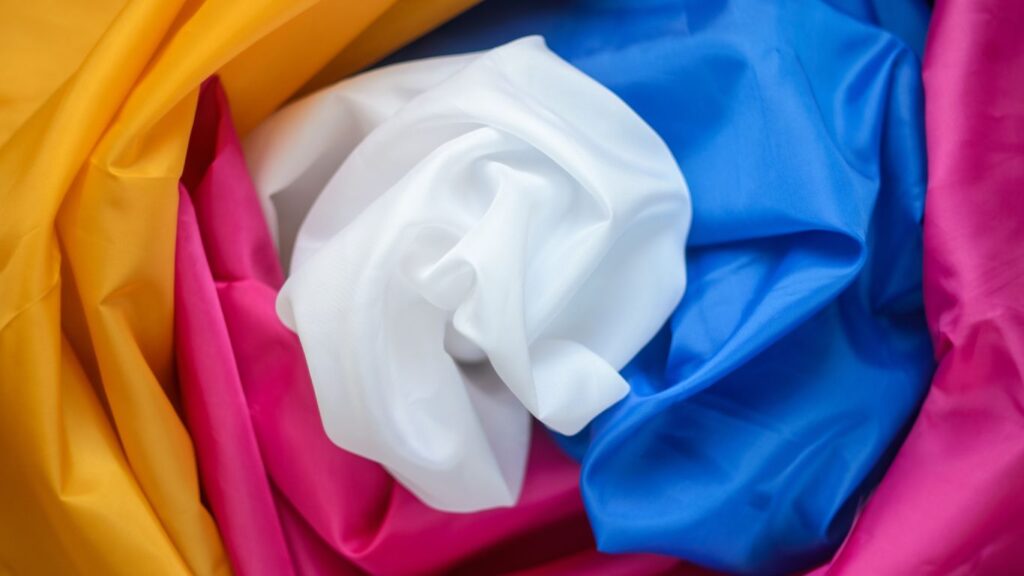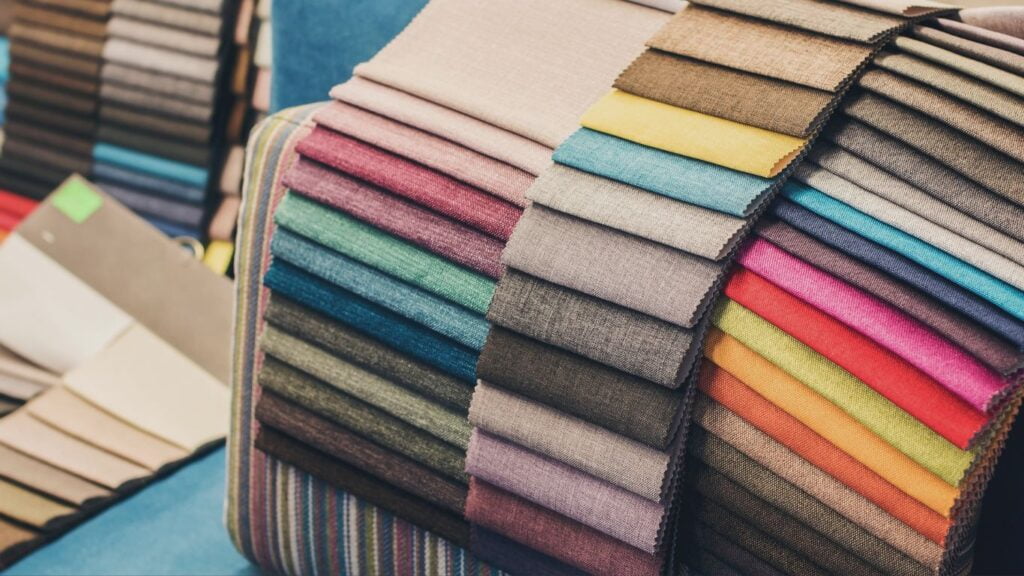Fabric composition is the term that describes the type and percentage of fibers that make up a textile. It is essential to consider when choosing fabrics for your clothing, home decor, or other projects. Fabric composition affects the material’s appearance, feel, durability, and environmental impact.
As a fabric expert with more than eight years of working experience in a leading fabric company, I have learned a lot about the different types of fabric compositions and how they affect the quality and sustainability of textiles. In this blog post, I will share my knowledge and tips on choosing the best eco-friendly fabrics for your needs. I will also compare and contrast some of the most common eco-friendly and conventional fabric compositions and explain how they impact the environment and human health.
Table of Contents
Eco-Friendly Fabric Composition

I’ll share my experience and knowledge about eco-friendly fabric compositions in this article section. We’ll go through two sub-sections: natural fibers and synthetic fibers. These sub-sections will help you make an informed decision on what fabrics to choose.
Natural Fibers
Natural Textile Compositions are super trendy! Here’s why:
- They are made from renewable resources like plants and animals.
- Their production process has a low eco-impact.
- They offer excellent breathability, comfort, and durability.
- They are biodegradable and help reduce waste.
Plus, natural fibers can be blended for unique fabric compositions. This brings even more benefits!
Pro Tip: Look for certifications such as GOTS or OEKO-TEX Standard 100 to ensure the sustainability of your clothing.
Organic Cotton
Organic cotton is a fantastic eco-friendly option. It’s grown without chemicals and encourages biodiversity and soil health. It can be blended with other natural fibers, like hemp or linen, for sustainable clothing and home textiles.
Consumers are increasingly choosing this conscious fabric. Making eco-friendly choices like organic cotton can help protect our environment and support social responsibility in the textile industry.
Linen
Linen fabric is made from flax plant fibers, making it eco-friendly. Plus, it has unique properties that make it even better! It’s durable, breathable, absorbent, hypoallergenic, and moisture-wicking. And its texture gets softer after each wash.
To care for linen fabric, machine wash gently with cold water and mild detergent. Don’t use bleach or high-heat drying, as it can damage the fibers. Instead, hang or lay flat to dry. Also, choose ethically sourced suppliers to support fair trade practices in the industry.
Silk
Silk is a natural fiber made by some insects, mainly the silkworms that live on mulberry leaves. Silk has a shiny appearance because its triangular shape reflects light differently. Silk is used for making textiles and has been valued for its beauty and quality since ancient times.
Silk is rare and expensive because it is hard to get and process. To make silk, people have to collect the cocoons of the silkworms and boil them to get the long threads. Then they have to spin and weave the threads into fabric.
Wool
Wool is a fiber from animals like sheep or goats or a material that looks like animal wool. It is different from plant fibers because it has protein and lipids. Wool grows from small cells in the skin called follicles. There are two types of follicles: primary and secondary.
Primary follicles make three kinds of fiber: kemp, medullated, and true wool. Secondary follicles only make true wool fibers. Wool has a natural wave called crimp, and scales help the fibers stick together. Wool can keep heat because it has air inside it.
Synthetic Fibers
Synthetic fibers are man-made and designed for the modern textile industry. They offer many benefits, such as durability, lightness, and shrinkage resistance. Polyester, nylon, and spandex are some examples of these.
Synthetic fibers can be recycled multiple times. They are also heat and UV resistant, making them great for outdoor apparel. Plus, synthetic fibers reduce agricultural water usage – a bonus for the environment.
However, synthetic fibers have their drawbacks. Some people worry about the environmental impact of their production process. While this should not be overlooked, progress is being made to make them more sustainable. This gives us hope for a more eco-friendly future!
Recycled Polyester
Recycled polyester is the new trend in the fashion industry! It’s made from plastic bottles and other post-consumer waste. It has a lower carbon footprint and uses less energy, water, and chemicals during production.
Significant brands like Patagonia, Adidas, and H&M use it for clothing, accessories, and home decor. But it’s also essential to ensure that the recycling process used to create this eco-friendly fabric is environment-friendly too!
Tencel
A second fabric composition is a sustainable option from a natural source: Tencel, made from wood pulp. It’s breathable, soft on the skin, and has moisture-wicking properties.
Tencel Lyocell and modal are eco-friendlier choices compared to synthetic fabrics made from fossil fuels such as polyester or nylon. Tencel fabric is more eco-friendly than its other semi-synthetic cousins, USDA certified, and biodegradable.
Synthetic Fabric Composition

To understand the impact of fabric composition on the environment, it’s essential to take a closer look at conventional fabric compositions like polyester, rayon, and nylon. These common fabrics are often the most affordable and accessible but often have consequences for the planet. In the following subsections, we will explore the pitfalls of each fabric and offer solutions to make more sustainable choices.
Polyester
This fabric is a mix of chemicals, creating wrinkle-free, strong, and lightweight cloth. It won’t shrink or stretch. Plus, it’s quick-drying and low-absorbent but not highly breathable. The fabric is exceptionally sturdy against wear, tearing, and abrasion – perfect for sportswear and heavy-duty gear. But, extended exposure to sunlight can lead to fading or damage.
Polyester is popular because of its crease-resistant and moisture-wicking traits. Though, extended contact with heat can melt or deform these fibers. Ensure all materials with your polyester garment can handle the heat when cleaning.
Nylon
This fiber is famous for its lightness and strength. It’s made of synthetic polyamides and created through a chemical process using diamines, dicarboxylic acids, and other reactants. It’s good at resisting wear, doesn’t absorb much moisture, and has good elasticity. That makes it great for hosiery, lingerie, sportswear, and automobile parts. A modified version of nylon is also used in outdoor applications. DuPont de Nemours Inc. invented nylon in 1935 and trademarked it.
Rayon
Rayon is a semi-synthetic fiber made from cellulose. Rayon has excellent draping qualities and can imitate natural fibers like silk, wool, and linen. Its manufacturing process involves dissolving cellulose from wood, cotton, or bamboo into a liquid.
This liquid goes through various chemical treatments before it’s spun into fibers. The final product depends on the production process. Rayon is comfortable to wear due to its absorbency and air circulation, even in hot weather.
Spandex
Spandex is a stretchy synthetic fiber created by DuPont. It is made of a polyether-polyurea copolymer and has many names worldwide. Some of the most common ones are “spandex” in North America, “elastane” in Europe, and “Lycra” in many English-speaking countries. Spandex is used for making clothes that need to fit tightly and comfortably.
The Impact of Fabric Composition

To understand the impact of fabric compositions on the environment, society, and economy, it’s important to choose eco-friendly materials. As someone who has worked in a leading fabric company for eight years, I know it can be difficult to distinguish between sustainable and unsustainable materials. In this section, I’ll discuss the various impacts of fabric compositions, including their environmental, social, and economic implications, to help you make informed decisions.
Environmental Impact
The ecological impact of fabrics is an urgent issue. The choice of materials for clothing, textiles, and other items is vital for the amount of damage to the environment. Different fabrics have different resource usage, waste outputs, and carbon emissions. Thus, comprehending the effects of fabric is critical to controlling environmental harm from textile production.
Natural fibers like cotton are preferred over synthetic fabrics like polyester or nylon due to their biodegradability. However, natural materials also bring disadvantages, such as higher water consumption and pesticide use in farming. Synthetics need less water but are not biodegradable.
In addition, eco-conscious consumers can select recycled fabrics made from post-industrial or post-consumer materials rather than virgin textiles in manufacturing processes. This helps to curb carbon emissions and ease demand for virgin raw materials.
Social Impact
Fabrics’ Societal Influence
Garments’ fabric composition has a massive effect on society. These fabrics, worn by individuals, can dictate the mood, style, and message conveyed. Synthetic fabrics shed microfibers when washed, polluting water and harming sea life. Organic and natural fabrics, however, are sustainable and support worker welfare with eco-friendly production techniques.
Globally, societies prefer certain textile fabrics based on their cultural traditions. For instance, Africans love colorful prints as they signify deep cultural meanings and social rank. In China, silk is the traditional wear fabric of choice, considered luxurious.
Understanding the impact of fabrics on societies and adopting sustainable strategies encourages ethical consumerism. This shows accountability for social welfare and ecological responsibility.
Today, join the movement for fashion sustainability that guards our planet and boosts social welfare.
Economic Impact
The economic effect of fabric compositions is immense. Factors like production costs, customer demand, and the availability of resources are vital in deciding the economic effect of fabric compositions.
Having a range of fabric options affects profit margins and increases sales.
Also, employing eco-friendly fabrics can positively influence brand status and boost profits.
For maximum gains, businesses should invest in sustainable fabrics while keeping production costs low to secure healthy profit margins.
Read More about Sustainability
- Natural Materials vs. Synthetic – How to Make a Smart Decision
- Why Act Now: The Urgency of Addressing Carbon Footprints
Frequently Asked Questions
Q: What is fabric composition, and why is it important to choose eco-friendly materials?
A: Fabric composition refers to the materials that make up a textile. Choosing eco-friendly materials is essential because they are made with sustainable, environmentally friendly processes and are less harmful to the environment and human health. Plus, they sustainably use natural resources and reduce greenhouse gas emissions and chemical pollution.
Q: What are some eco-friendly fabric compositions?
A: There are a variety of eco-friendly materials available. Some examples are organic cotton, hemp, bamboo, linen, and recycled fabrics such as post-consumer PET, options made from cellulosic fibers (e.g., Tencel, Modal), and other sustainable materials (e.g., flax, wool, silk).
Q: How can I tell if a fabric is eco-friendly?
A: Check the label to see if the fabric is made with certified organic fibers or recycled materials. Another way is to look for third-party certifications such as GOTS (Global Organic Textile Standard), Oeko-Tex Standard 100, USDA (United States Department of Agriculture) organic certification, and Bluesign certification.
Q: Is it more expensive to purchase eco-friendly fabrics?
A: It can be more expensive to buy eco-friendly fabrics at times due to the extra steps taken in producing and manufacturing sustainable materials. However, it is usually worth it in terms of the social, ethical, and environmental benefits they offer.
Q: Are natural fabrics like cotton and linen always eco-friendly?
A: Not necessarily. Most cotton is still grown conventionally, using pesticides and synthetic fertilizers. Linen can require a lot of water during production. Look for certified organic cotton and linen that can ensure a minimized impact on the environment and health.
Q: Can I recycle fabrics?
A: Yes, some fabrics can be recycled. Fibers like cotton and wool can be ground down and reused, and polyester, a synthetic fiber, can be recycled into various products. There are even some fabrics made entirely from recycled materials in the market. However, fabric blends containing multiple fibers usually can’t be recycled, so material selection is essential while buying clothes.
